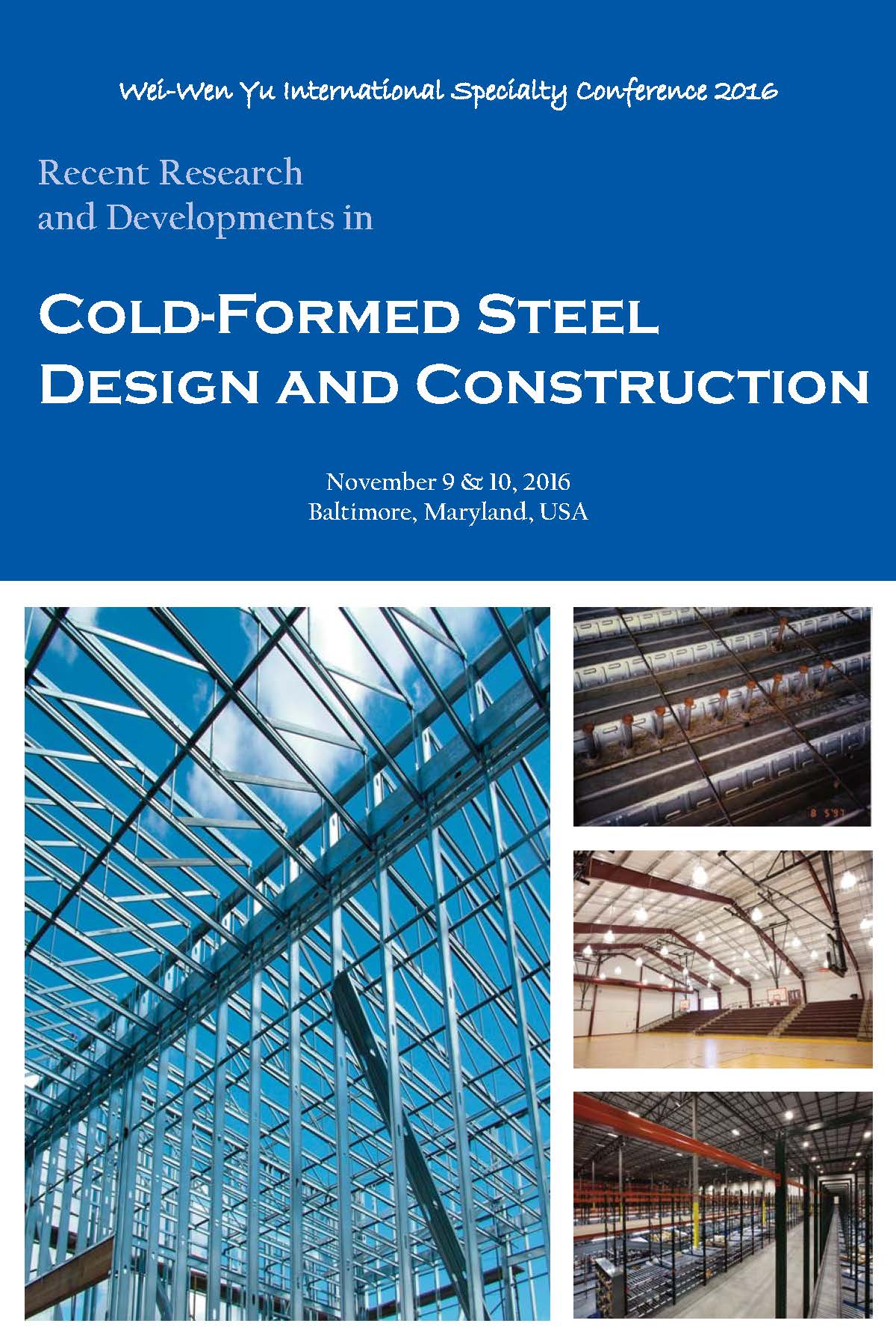Session Dates
10 Nov 2016
Abstract
For unbraced steel storage racks, the down-aisle stability depends largely on the performance of beam-to-upright connections and column bases. Boltless connections are generally used in order to make rack structures easy to assemble and feasible to adjust the storey height. Recently, storage racks are designed to carry large amounts of goods and they are therefore raise a considerable height, which makes the improvement of the structural stability to be sufficiently important. Under the circumstances, tab-connected beam-to-upright connections with bolts are gradually used in steel storage racks. Compared with boltless connections, the stiffness, strength and ductility of the bolted connections are improved to some extent. This paper presents an experimental investigation into the moment-rotation characteristic of steel storage rack beam-to-upright bolted connections under monotonic loads. Seven groups of specimens were tested with different constructional details and three identical specimens were repeated for each group. Moreover, the single cantilever test method was employed to study the rotational behaviour of connections. Effects of various parameters, such as upright thickness, beam height and tab numbers on connection behaviour are discussed and presented in this paper. The experiments show that the failure modes of bolted beam-to-upright connections depend on the relative thickness between the upright and beam-end-connector, as well as the relative height between the beam and beam-end-connector. Furthermore, the results obtained from the present study highlight that the behaviour of connections, such as stiffness and ultimate moment capacity, are considerably influenced by the specific constructional details.
Department(s)
Civil, Architectural and Environmental Engineering
Research Center/Lab(s)
Wei-Wen Yu Center for Cold-Formed Steel Structures
Meeting Name
International Specialty Conference on Cold-Formed Steel Structures 2016
Publisher
Missouri University of Science and Technology
Document Version
Final Version
Rights
© 2016 Missouri University of Science and Technology, All rights reserved.
Document Type
Article - Conference proceedings
File Type
text
Language
English
Recommended Citation
Dai, Liusi; Zhao, Xianzhong; and Ren, Chong, "Experimental Investigation into Steel Storage Rack Beam-to-Upright Bolted Connections" (2016). CCFSS Proceedings of International Specialty Conference on Cold-Formed Steel Structures (1971 - 2018). 1.
https://scholarsmine.mst.edu/isccss/23iccfss/session6/1
Experimental Investigation into Steel Storage Rack Beam-to-Upright Bolted Connections
For unbraced steel storage racks, the down-aisle stability depends largely on the performance of beam-to-upright connections and column bases. Boltless connections are generally used in order to make rack structures easy to assemble and feasible to adjust the storey height. Recently, storage racks are designed to carry large amounts of goods and they are therefore raise a considerable height, which makes the improvement of the structural stability to be sufficiently important. Under the circumstances, tab-connected beam-to-upright connections with bolts are gradually used in steel storage racks. Compared with boltless connections, the stiffness, strength and ductility of the bolted connections are improved to some extent. This paper presents an experimental investigation into the moment-rotation characteristic of steel storage rack beam-to-upright bolted connections under monotonic loads. Seven groups of specimens were tested with different constructional details and three identical specimens were repeated for each group. Moreover, the single cantilever test method was employed to study the rotational behaviour of connections. Effects of various parameters, such as upright thickness, beam height and tab numbers on connection behaviour are discussed and presented in this paper. The experiments show that the failure modes of bolted beam-to-upright connections depend on the relative thickness between the upright and beam-end-connector, as well as the relative height between the beam and beam-end-connector. Furthermore, the results obtained from the present study highlight that the behaviour of connections, such as stiffness and ultimate moment capacity, are considerably influenced by the specific constructional details.



